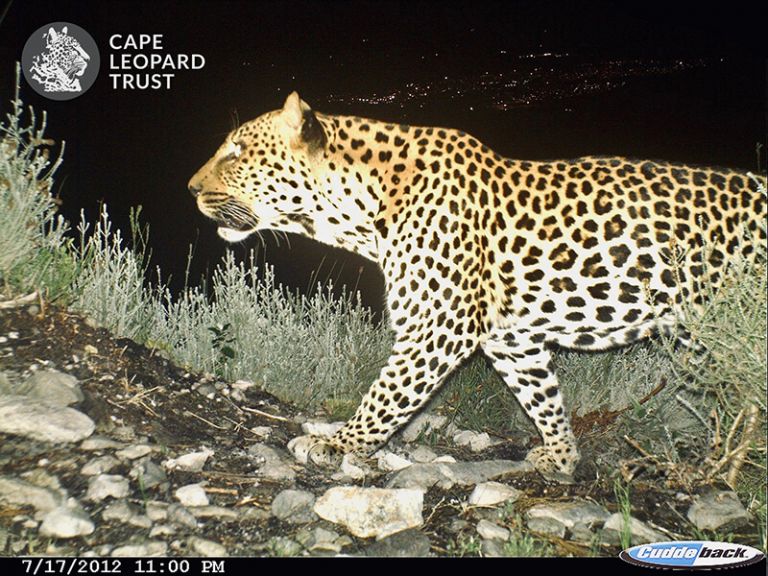Over the past few weeks, there have been multiple reports and stories from around the world showing wild animals in places usually overrun by humans. Countless memes, comics and illustrations on social media enforces the idea that ‘animals are reclaiming the earth’ and wildlife once again has more freedom to roam now that a large proportion of the world’s population is under lockdown.
While this certainly holds true in most cases, there are also a few occasions where the truth is stretched a little (or a lot!), where old photos are used, where reports are represented in the wrong context or where misleading headings and sensationalist taglines simply try to grab the readers’ attention. As with everything these days, fake and ambiguous news abounds…
Many people still do not realise that there are wild leopards living free and unfenced in almost all of the mountainous regions of the Western Cape – and that they have been there since long before lockdown – even long before human settlement of the Cape Province. Leopards in the Cape mountains are notoriously elusive and shy of people, and the best way to study them is by using remote-sensing field cameras. It’s not unusual to get images of leopards from the mountain slopes above Boland and Overstrand towns like Paarl, Stellenbosch, Grabouw, Gordon’s Bay and Kleinmond, yet so many people are still surprised to find out that they are there.

Maximus in the mountains near Franschhoek, Bacardi near Somerset West, and Nala near Rawsonville
Since lockdown started in SA, there have been some widely reported photos and sightings of leopards in the Cape Winelands and Overstrand. In some cases, the photos are being touted as being the direct result of lockdown and leopards now suddenly ‘roaming free’. What these reports and articles fail to convey is that leopards have always been here – they have been caught on camera multiple times before and these sightings do not necessarily have anything to do with the lockdown***. Much hype and sensation have been created around images that would during ‘normal times’ have gone unnoticed – and maybe that in itself is some food for thought…
It must be added that it is indeed entirely possible for leopards to be a bit bolder and move lower down on mountain slopes than they usually would now that there is so much less human movement and activity. It is of course not just the physical presence of humans that is much less, but also our cacophony of sounds (traffic, construction etc) and smells (exhaust fumes, processing plants etc), which, collectively, usually act as a powerful deterrent to most wildlife. Leopards are territorial and will constantly look for new opportunities to extend their individual home ranges. They are also inquisitive and like to investigate new areas, especially younger cats that do not yet hold a territory of their own. Leopards are generally quite savvy and will readily retreat as soon as it senses danger or feel uncomfortable. That said, never try to approach a leopard on foot, never corner it and never try to catch it. If you are on foot, retreat slowly (facing the animal) to keep it from panicking. Leopards in the Cape mountains are generally very wary and will try to get away as soon as possible.
In the Western Cape, we are incredibly lucky to still have wild leopards persisting in the mountainous regions. But as human housing and agricultural developments encroaches further on our natural areas, it puts ever greater pressure on these habitats – the homes of our wild neighbours… Perhaps we could all use this time of lockdown to reflect on how we perceive the wild spaces around us and how we should conduct ourselves in these spaces, knowing that wildlife like leopards and so many other species were there first – and our actions are driving them closer and closer to the edge of existence.
***A huge hype was created around the footage of a leopard taken on L’Ormarins Wine Estate earlier in April. In various articles, the video was presented as being taken ‘next to the houses while residents were sleeping’ or used as evidence that leopards now roam Franschhoek itself. One New Zealand newspaper even claimed that “big cats have returned to a South African town” and that “restrictions on human movement have tempted big cats into residential areas”. In actual fact, the L’Ormarins footage was obtained in a mountainous area away from regular human activity and movement and has nothing to do with human lockdown.
By Jeannie Hayward
The Cape Leopard Trust

















